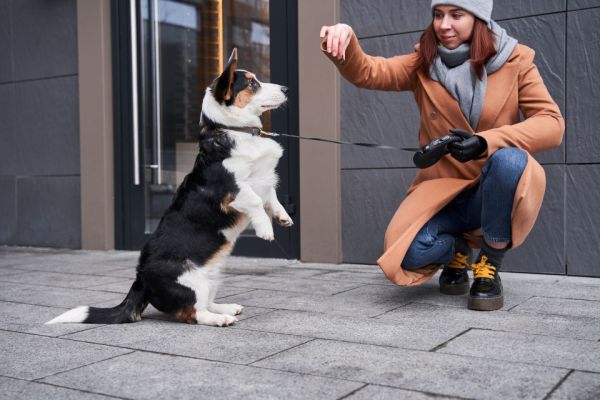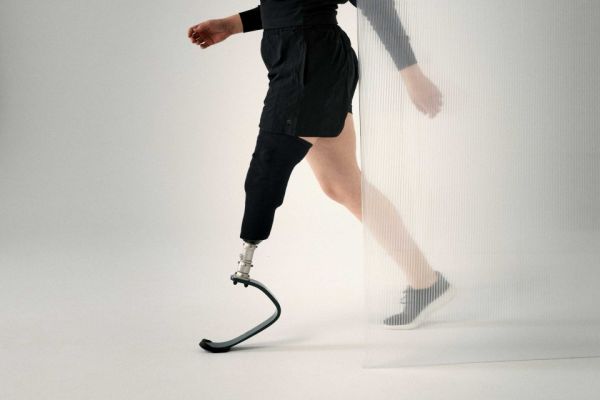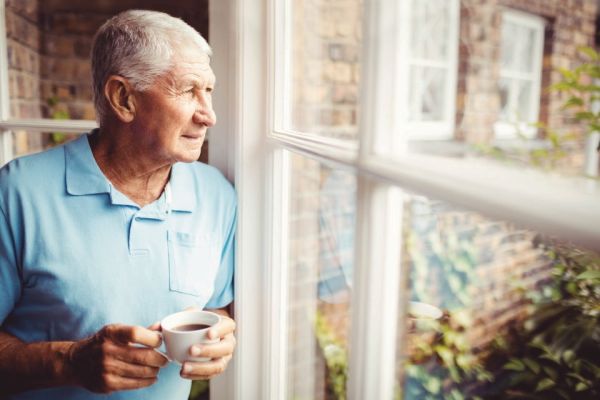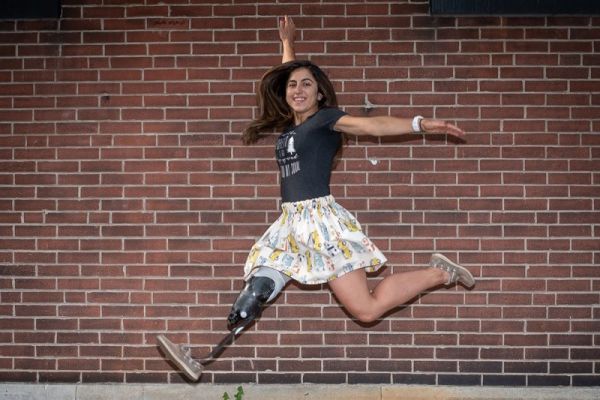Good Pet Choices for Amputees

Life after an amputation can be a profound journey with moments of challenge, resilience and triumph. The road to recovery is personal and varies from one individual to another. Certain factors can act as powerful sources of support, comfort and joy... like pet ownership.
The companionship of a loyal animal can bring unparalleled emotional and even physical benefits. For those living with an amputation or limb difference it’s no different of course, but there are some unique things to consider when welcoming a pet into their lives.
At the heart of pet ownership lies the unwavering companionship animals provide. Whether it’s a dog that greets you with a wagging tail, a cat that curls up by your side, or even a bird that chirps cheerfully, the connection with a pet fosters a profound sense of belonging and love.
Research shows that the health benefits of owning a pet are undeniable. Interacting with pets has been shown to increase oxytocin levels, the “feel-good” hormone, reducing feelings of loneliness and promoting happiness.
Physical activity is a vital component of health, particularly for those adapting to life with a prosthesis or managing other physical changes in one’s body. Pets, especially dogs, can act as motivators for movement. A daily walk with a dog can improve cardiovascular health and build strength. Even playful interactions with smaller animals like cats, rabbits, and birds, can help with mobility and coordination. And the act of caring for a pet – feeding, grooming, playing with them – creates a structured routine that is good for mental health.
While the rewards of pet ownership are immense, if living with limb loss or limb difference, it’s important to thoughtfully weigh certain practical considerations before bringing a pet home.
At the heart of pet ownership lies the unwavering companionship animals provide. Whether it’s a dog that greets you with a wagging tail, a cat that curls up by your side, or even a bird that chirps cheerfully, the connection with a pet fosters a profound sense of belonging and love.
Research shows that the health benefits of owning a pet are undeniable. Interacting with pets has been shown to increase oxytocin levels, the “feel-good” hormone, reducing feelings of loneliness and promoting happiness.
Physical activity is a vital component of health, particularly for those adapting to life with a prosthesis or managing other physical changes in one’s body. Pets, especially dogs, can act as motivators for movement. A daily walk with a dog can improve cardiovascular health and build strength. Even playful interactions with smaller animals like cats, rabbits, and birds, can help with mobility and coordination. And the act of caring for a pet – feeding, grooming, playing with them – creates a structured routine that is good for mental health.
While the rewards of pet ownership are immense, if living with limb loss or limb difference, it’s important to thoughtfully weigh certain practical considerations before bringing a pet home.
Keeping Pace
Different pets come with different needs, and it’s important to match these with your physical abilities. High-energy and working dog breeds may require frequent walks or playtime. This can be demanding during early stages of recovery, or when experiencing pain or other health complications that make daily walks difficult. Smaller pets on the other hand can offer companionship without as much physical effort, making them ideal for those with limited mobility.
If you’re considering a dog, breeds with calmer temperaments or lower exercise needs like Golden Retrievers or Bulldogs might be more manageable. It’s also a good idea to explore the possibility of adopting an older, well-trained pet instead of a younger, more demanding one.
And while you want to be gentle with your pet, your pet might not be gentle with you! If you welcome a dog into your life, obedience classes are a must. If you’re a lower limb amputee, and a dog yanks on a leash with you on the other end, you can be thrown off balance or the extra pressure put on your socket could be painful. In the case of upper extremity amputees, while prosthetic hooks and hands can take a fair amount of pressure and have adjustable grip strength, a big dog trying to chase a squirrel might be too much. Talk to your prosthetist, as some myoelectric devices can be calibrated to accommodate for pets.
If you’re considering a dog, breeds with calmer temperaments or lower exercise needs like Golden Retrievers or Bulldogs might be more manageable. It’s also a good idea to explore the possibility of adopting an older, well-trained pet instead of a younger, more demanding one.
And while you want to be gentle with your pet, your pet might not be gentle with you! If you welcome a dog into your life, obedience classes are a must. If you’re a lower limb amputee, and a dog yanks on a leash with you on the other end, you can be thrown off balance or the extra pressure put on your socket could be painful. In the case of upper extremity amputees, while prosthetic hooks and hands can take a fair amount of pressure and have adjustable grip strength, a big dog trying to chase a squirrel might be too much. Talk to your prosthetist, as some myoelectric devices can be calibrated to accommodate for pets.
Home Improvements
Assess your living space to ensure that it is safe and accessible for both you and your pet. If you’re using a mobility aid such as a wheelchair or prosthetic device, consider whether the layout of your home allows you to care for an animal comfortably.
Having a fenced backyard for dogs is ideal. You can also make pet-friendly modifications such as a feeding area at a height that you can easily reach to make dinner time smoother for you and your companion.
Keeping your home clean and clutter-free is important too, especially if you are a lower limb amputee. Pet toys and treats can be a tripping hazard and make navigating with a wheelchair more difficult. Another big hazard is pet hair. Most cats and dogs shed. You won’t feel pet hair accumulating on the bottom of your prosthetic foot which can cause you to slip and fall, especially when collecting on the bottom of a sock. An easy solution, wear indoor shoes and sweep or vacuum floors daily.
Pet Care by Proxy
There may be times when caring for a pet will be more challenging. There might be times when you can’t wear your prosthesis, because you are physically unable to, or it’s in for repairs. It’s comforting to have the snuggles of a pet during these frustrating periods, but it’s also stressful as you can’t meet their needs.
It’s times like these when a support system of family, friends, neighbours and maybe a pet service can come in handy. They can help with exercise, carrying bags of food and kitty litter, and take over backyard clean up. Backup care will ensure that your pet’s needs are met, even during moments when you require additional rest or recovery.
For dog owners, off-leash parks are an option if your four-legged pal is well behaved so that you can sit on a bench or stand and throw a ball for a game of fetch (remember the reference to “obedience training” above).
At Your Service
For some individuals, investing in a trained assistance animal can offer not only companionship but also practical support. Service dogs, for example, can assist with tasks such as retrieving items, opening doors, or even providing stability while walking. Partnering with reputable organizations that train service animals will ensure that the animal that you bring home is a good match for your lifestyle and specific needs.
Having a fenced backyard for dogs is ideal. You can also make pet-friendly modifications such as a feeding area at a height that you can easily reach to make dinner time smoother for you and your companion.
Keeping your home clean and clutter-free is important too, especially if you are a lower limb amputee. Pet toys and treats can be a tripping hazard and make navigating with a wheelchair more difficult. Another big hazard is pet hair. Most cats and dogs shed. You won’t feel pet hair accumulating on the bottom of your prosthetic foot which can cause you to slip and fall, especially when collecting on the bottom of a sock. An easy solution, wear indoor shoes and sweep or vacuum floors daily.
Pet Care by Proxy
There may be times when caring for a pet will be more challenging. There might be times when you can’t wear your prosthesis, because you are physically unable to, or it’s in for repairs. It’s comforting to have the snuggles of a pet during these frustrating periods, but it’s also stressful as you can’t meet their needs.
It’s times like these when a support system of family, friends, neighbours and maybe a pet service can come in handy. They can help with exercise, carrying bags of food and kitty litter, and take over backyard clean up. Backup care will ensure that your pet’s needs are met, even during moments when you require additional rest or recovery.
For dog owners, off-leash parks are an option if your four-legged pal is well behaved so that you can sit on a bench or stand and throw a ball for a game of fetch (remember the reference to “obedience training” above).
At Your Service
For some individuals, investing in a trained assistance animal can offer not only companionship but also practical support. Service dogs, for example, can assist with tasks such as retrieving items, opening doors, or even providing stability while walking. Partnering with reputable organizations that train service animals will ensure that the animal that you bring home is a good match for your lifestyle and specific needs.








 How to resolve AdBlock issue?
How to resolve AdBlock issue?